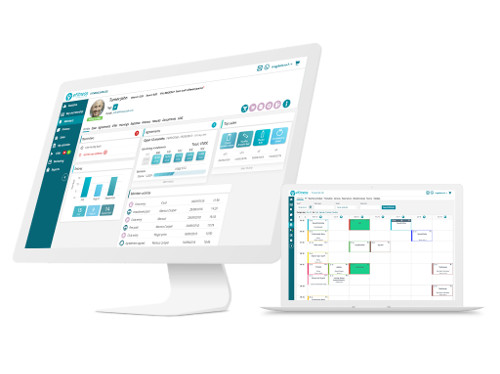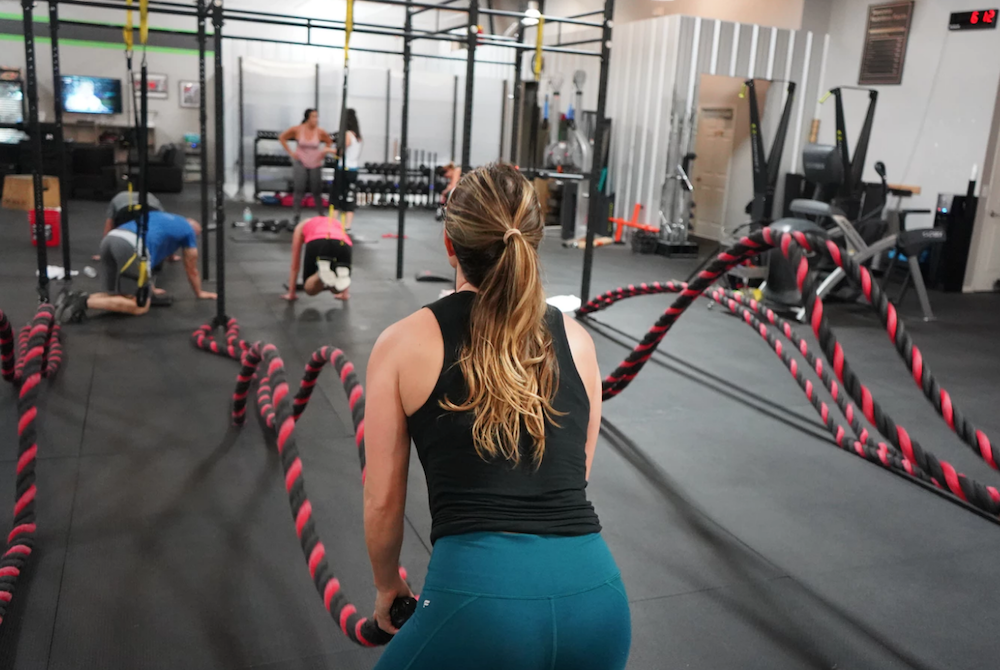As a shrewd health club operator, you’ll be conscious that Personal Training is a revenue stream which can contribute a significant amount to your facilities’ profitability. But have you ever thought about Small Group Training (SGT) as a fruitful avenue for your fitness facility?
A recent report from IHRSA titled the ‘Fitness Training Report’ offered some insight into which demographics enjoy taking part in SGT. The report revealed that health club goers from ethnic-minority groups are more likely to participate in Personal Training and SGT than they are to train on their own.
The report also disclosed that SGT clients are more likely to be female, and aditionally, that fitness-only clubs have much higher participation rates in SGT compared to the premium health clubs with a ‘full-service’ offering.
Perhaps the most astonishing revelation of all was that nearly half of Generation Z (under 18 years) health club consumers were currently engaged in a form of SGT.
All these findings have clear implications for health club operators, especially fitness-only clubs; it’s time to invest carefully into SGT and to deliver it in a way that resonates and adds value to your target audience.

SGT can be considered a hybrid, it’s a cross-breed between Personal Training and Group Exercise. If you want your SGT to possess all the required elements to make it the best it can be, it needs to represent far more characteristics of the former than the latter. Typically Group Exercise is free and is included in a members’ monthly membership package, whereas Personal Training is an added extra that members will pay for.
Just like conventional Personal Training, to make SGT remunerative, it will need to have a price attached to it, therefore in the members’ eyes, it’s important that an SGT session represents something of much higher value than the ‘free’ Group Exercise experience.
So how do you ensure that your SGT offering is clearly distinguishable from anything else that you provide, and give your participants the maximum amount of value? Here are our top tips;
Number of Instructors to attendees
In a Group Exercise class, there is typically anywhere between 8 to 40 participants (depending on the size of the studio), and there is usually only one instructor. This means the ratio, at best, is 1 instructor to 8 participants. Within an SGT environment, we would advise a ratio of 1 instructor to 4 participants. This will hopefully foster the right climate necessary for effective delivery, which we shall cover in more detail next…
Creating a motivational environment
To create a fun, positive environment for a Group Exercise class, it’s viewed as advantageous to play loud, upbeat, pumping music. The GX instructor will often wear a microphone headset and deliver additional words of encouragement which reverberate around the room and get everyone ‘hyped’. In an SGT environment, it’s questionable as to whether music should be used. It may be better to focus the attention on the conversation between the clients and the coach, so the coach can offer words of motivation and give advice during the workout.

Tailoring SGT to individuals
When your Fitness Programming team design your Group Exercise classes, they do it with a view to suit the majority. Before the session, the Group Exercise Instructor will ask if anyone has any injuries and they may tweak the routine ever so slightly for any individuals of concern. In an SGT environment, it’s important that the delivery is fully tailored to each individual. There should be clear progression stages of each exercise to suit all levels and if an individual has an area they want to specifically focus on, this should be fully acknowledged within the design of the program.
Coach feedback during the session
In a class environment, because the instructor has to manage 40 attendees, they often stand at the front and demonstrate the exercise techniques, so effectively they take part in the class themselves. Every now and again, they may praise an attendee but the prime focus is on attendees mirroring the instructor’s movement. In the SGT environment, as it’s recommended to have 1 instructor for every 4 participants, there should be much more focus placed on form correction. The SGT Coach should only have to demonstrate the exercise once, from two angles and the rest of their duty should be around providing the participants with corrective information.

Results oriented feedback displayed on screens
Alongside, receiving feedback from coaches, many operators also utilise heart rate monitors which use wireless and cloud-based technology to display vital information on TV’s, this includes information related to the total calories each participant has burned and their current target heart-rate zones. This supplementary feedback can be extremely powerful in motivating SGT participants to exert more effort and increase the intensity of their workout. By having this as part of your SGT experience, this can be a clear, notable point of difference from your other non-chargeable Group Exercise classes.
Performance monitoring post-session
In a Group Exercise class, your members will book, attend, sweat, catch up with friends, bid their farewells and then book on to the next one if they enjoyed it. It’s very rare that your class goers will record their statistics or other key metrics from the class. After an SGT session, we do recommend that the participants record their statistics from the workout so they can see for themselves the clear progressions that have taken place throughout their adoption of an SGT programme. This can be either task related, for example, the number of kettlebell swings performed during an Every Minute On the Minute workout (EMOM), or it could be body composition related, for example, Body Fat Percentage or Muscle Mass percentage.
Either way, giving members the option to monitor their performance over time will create a feeling of worth and keep your participants committed to achieving success. If you have the metrics displayed on the TV Screens, it may be wise to sync this data up to an app which members can view on their mobile phones in their own time.

Programming like a PRO
When a Personal Trainer prescribes a programme for a client, they will need to consider a number of fundamental training principles. These are put in place to ensure that their client experiences the physiological and metabolic adaptations, at the right time, which will ultimately lead to the client achieving the results they want. The PT will typically decide whether a client should undertake a hypertrophy, strength or endurance based programme, and within each respective category, they will propose the desired number of reps and sets, the appropriate rest time in between sets, and the recommended time under tension necessary for performing each exercise. The PT will also consider which other advanced methods of training to employ, for example – they may assign ‘drop-sets’ to their client in Week 3 and ‘pyramid training’ in Week 4.
In SGT, the coach should also follow these same training principles, and the participants should be well aware of the progressions and the modifications to the program so they can feel that extra level of personalisation.

To summarize, SGT can be extremely effective when applied in the right way. Ensuring that your SGT delivery has an identity which sets itself apart from anything else you offer should be of paramount importance – this is the only way your members will genuinely perceive your service to be worth their investment.
Follow the tips we have outlined above and watch your SGT revenue soar.
Is something holding you back from increasing your offering? Perhaps you are unable to create the right packages to allow SGT to come to fruition? If that is the case, eFitness may be here to help.






